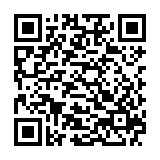Have you ever explored the vibrant world of language preservation and revitalization? In this article, we’ll dive into the fascinating efforts to protect endangered languages, celebrate linguistic diversity, and preserve our shared linguistic heritage. Language enthusiasts and cultural preservationists are all part of these efforts. Get ready to explore inspiring initiatives, innovative strategies, and heartwarming success stories in language conservation!
The Importance of Endangered Languages
Cultural Richness and Diversity
Endangered languages are not just words; they embody centuries of cultural heritage, traditions, and collective wisdom. Each language represents a unique worldview, artistic expression, and oral history passed down through generations. Preserving endangered languages is crucial for safeguarding cultural richness and diversity, ensuring that future generations inherit a tapestry of linguistic treasures.
Knowledge Preservation and Traditional Wisdom
Endangered languages often contain invaluable knowledge about local ecosystems, traditional practices, medicinal plants, and sustainable lifestyles. They are repositories of indigenous knowledge, storytelling traditions, and spiritual beliefs that offer insights into human adaptation and resilience. Preserving these languages is essential for safeguarding traditional wisdom and ecological stewardship.
Identity and Community Cohesion
Language is deeply intertwined with identity, belonging, and community cohesion. Endangered languages serve as markers of cultural identity, connecting individuals to their ancestral roots, land, and heritage. Revitalizing these languages strengthens cultural pride, self-esteem, and intergenerational bonds within linguistic communities, fostering resilience and empowerment.
Challenges in Language Preservation
1. Language Shift and Decline
Endangered languages are under siege from language shift, a phenomenon where speakers abandon their native tongues in favor of dominant languages due to social, economic, or political pressures. The rapid pace of urbanization, globalization, and media influence are contributing to the erosion of linguistic diversity, leading to the imminent threat of language decline and extinction. It is our collective responsibility to address these challenges urgently by promoting language use and transmission in everyday contexts.
2. Lack of Resources and Support
Many endangered languages lack institutional support, funding, and resources for preservation efforts. Language revitalization projects often struggle with limited access to educational materials, technology, and trained linguists. Collaborative partnerships, community engagement, and advocacy are essential for mobilizing resources and building sustainable frameworks for language preservation.
3. Intergenerational Transmission
The transmission of endangered languages from older generations to younger ones is critical for their survival. However, intergenerational transmission is hindered by language stigmatization, migration, and educational policies that prioritize dominant languages. Creating supportive environments for language learning, storytelling, and cultural immersion is essential for fostering language continuity and revitalization.
Innovative Strategies for Language Revitalization
Language Documentation and Revitalization Projects
Language documentation initiatives record and preserve endangered languages through audiovisual recordings, dictionaries, grammar, and digital archives. These projects capture linguistic diversity, oral traditions, and structures, providing valuable resources for language revitalization efforts. Digital technologies, such as mobile apps and online platforms, enhance accessibility and outreach for language documentation projects.
Community-Led Language Revitalization
Empowering linguistic communities to lead revitalization efforts is key to sustaining language vitality. Community-based language programs, immersion schools, and cultural events promote language use, transmission, and pride among speakers of endangered languages. Collaborative partnerships with schools, universities, and cultural institutions support community-led initiatives and amplify their impact.
Technology and Language Innovation
Digital tools and technologies play a transformative role in language revitalization. Language learning apps, interactive games, and virtual classrooms engage learners and promote active language use. Machine translation and natural language processing tools support linguistic analysis, corpus development, and content creation in endangered languages. Embracing technology-driven solutions enhances accessibility, scalability, and sustainability in language revitalization efforts.
Success Stories in Language Preservation
1. Maori Language Revitalization in New Zealand
The Maori language revitalization movement in New Zealand has achieved significant milestones in preserving and promoting the Maori language, Te Reo Maori. Through educational initiatives, media campaigns, and community involvement, the Maori language has experienced a revival in usage, recognition, and cultural relevance. Efforts to integrate Te Reo Maori into mainstream education, public signage, and media platforms have contributed to its revitalization and intergenerational transmission.
2. Navajo Language Preservation in the United States
The Navajo Nation in the United States has implemented comprehensive language preservation programs to safeguard the Navajo language, Diné Bizaad. Collaborative efforts between tribal authorities, schools, and language advocates have resulted in language immersion programs, teacher training initiatives, and multimedia resources for Navajo language learners. These initiatives have revitalized Diné Bizaad among younger generations and strengthened cultural identity within the Navajo community.
3. Ainu Language Revitalization in Japan
The Ainu people of Japan have embarked on a journey to revitalize the Ainu language, Ainu Itak. Cultural centers, language workshops, and educational materials in Ainu Itak have been developed to promote language use and awareness. Legislative recognition of the Ainu as an indigenous people and efforts to integrate Ainu language and culture into school curricula have contributed to the revitalization of Ainu Itak and cultural revitalization among the Ainu community.
Preserving Linguistic Heritage for Future Generations
As we conclude our exploration of preserving endangered languages, we celebrate the resilience, creativity, and dedication of language activists, educators, and communities worldwide. Efforts to protect and revitalize endangered languages are not just about linguistic survival but about preserving cultural heritage, nurturing identity, and fostering intergenerational connections. By supporting language preservation initiatives, advocating for linguistic diversity, and embracing multilingualism, we can ensure a future where every language is cherished, every voice is heard, and every heritage is preserved for future generations.





0 Comments